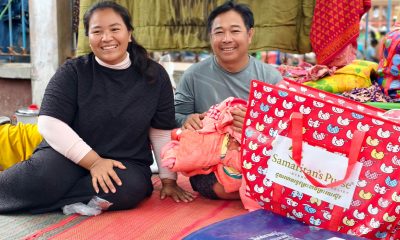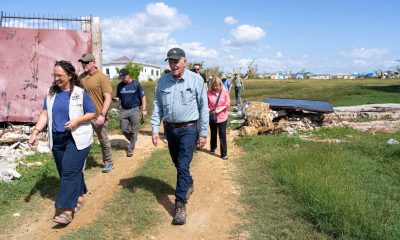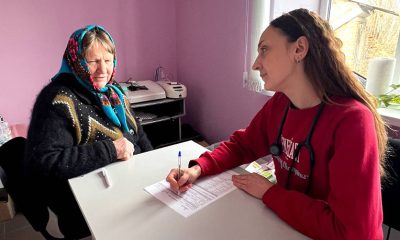Samaritan’s Purse is rebuilding homes in an area still struggling to recover from the most devastating earthquake in Nepal’s history.
The fire crackled and popped as she crouched down, opened the stove door, and added a few more pieces of wood. The steady, flickering flames ushered a soothing warmth into the room, a welcome respite from the chill.
Outside, the winter sun furiously beat down upon layers of thick snow, the intense glare pushing back the impending darkness a little longer. Night’s descent would bring with it rattling winds and a raw, bitter cold.
After dinner, the fire—this home’s only haven of warmth—became the gathering place for Tshering’s family and neighbors.
Tshering grew up in northern Nepal’s Langtang Valley, where unforgiving yet brilliant winters run their annual course below snow-capped Himalayan peaks. The village is remote—the nearest town is an 11-hour walk—but it’s home, and it’s where she was determined to return even after a 7.8-magnitude earthquake decimated the high-altitude valley.
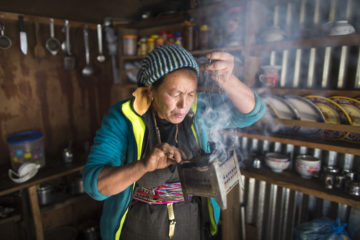
Tshering prepares incense to use during her Buddhist prayer rituals.
Two years ago, Tshering and her daughter were home, gathered around the stove’s fire, when the most destructive earthquake to ever hit Nepal struck with deadly force.
“It was lunch time and we were cooking. The house began to shake and we ran from the house,” Tshering said.
Her daughter died in the quake-sparked avalanche that buried their village.
“My father, mother, and big sister also died. They were in the field to get barley when it hit. There wasn’t anywhere to escape,” Tshering said as she used her sleeve to wipe away tears that poured down her face.
More than 300 of the 700 people in the village perished beneath the sliding mountain of ice and rock. More than 100 bodies were never recovered.
Reviving Langtang
Samaritan’s Purse is rebuilding hundreds of homes throughout areas hit hardest by the earthquake. Among the areas is Langtang valley, where Tshering’s isolated village was once synonymous with the ultimate Himalayan trekking adventure.
The popular Langtang trail leads through stunning mountain terrain to elevations of nearly 12,000 feet. Although Langtang still hosts trekkers, tourism has been slow to resume after the earthquake, leaving the village struggling even more so economically.
Still, people like Tshering and her family knew they wanted to return.
“Langtang is our birthplace. We have to stay here,” said her son, Dawa.
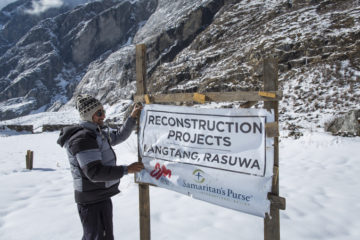
The earthquake destroyed hundreds of Langtang homes.
Dawa now works as one of our staff members in Langtang, building relationships with the community and connecting families in need with Samaritan’s Purse.
“I am happy when I work with Samaritan’s Purse and help the villagers,” Dawa said.
In addition to rebuilding homes in Langtang, Samaritan’s Purse set up a sawmill to cut trees uprooted by the earthquake into beams and planks. Our staff is working to provide each household in Langtang wood to use for rebuilding.
No Time for Goodbye
Ghyalsang also grew up in Langtang and it’s where he wanted to raise his two sons. He works hard as a porter for trekkers and carries heavy loads up and down mountains.
Langtang is so isolated that the only way to import anything, including building supplies, is by helicopter or by trekking it in with porters or mules.
Ghyalsang’s father also worked with trekkers, which is what he was doing the day of the earthquake.
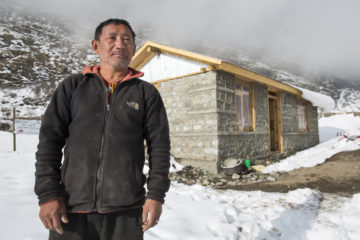
Ghyalsang is glad to be living in a safe home.
“My father left early in the morning. He was on his way to sell goods to trekkers,” Ghyalsang said.
His father never returned home. Ghyalsang never found his body. Four of Ghyalsang’s neighbors also died in the earthquake.
His house was completely destroyed, and he lived in a temporary shelter until Samaritan’s Purse stepped in and rebuilt his home.
Rebuilding in Langtang is difficult not only because it’s remote, but because of extreme weather. Snow and freezing temperatures in winter, and torrential downpours during monsoon season, leave only about half the year suitable for construction.
The challenge is well worth it.
“I’m very happy with the house,” Ghyalsang said. “Everything is perfect,” he kept repeating. “Everything is perfect.”
Coming Home
Gshering and her husband were born in Langtang and have lived in the valley 80 years. The couple grows potatoes and barley and raise sheep and yak.
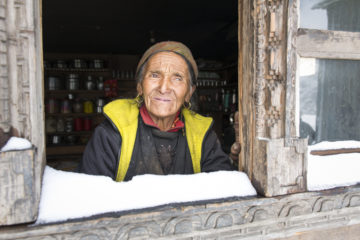
Gshering’s family is the first in Langtang to move into a home built by Samaritan’s Purse.
They’re the first beneficiaries of a Samaritan’s Purse rebuild in Langtang. Before moving into their new home, they lived in a tent.
“We had no place to live,” Gshering said. “Samaritan’s Purse gave us a home—we’re very glad.”
They live in their new home with their grandson, who is physically disabled. Their grandson’s mother and father, their son, both died in the avalanche.
“[His mother] was searching for him. A stone hit her head,” Gshering explained. “She broke her head and was dead on the spot.”
Gshering barely escaped death that day. She hid in a small cave and listened with horror as stones and trees fell around her.
“We were scared,” she said. “But we had to return.”
Please pray for Samaritan’s Purse staff who are working hard to bring Nepalis home to Langtang. Pray that the people of Nepal will see and respond to God’s love for them.
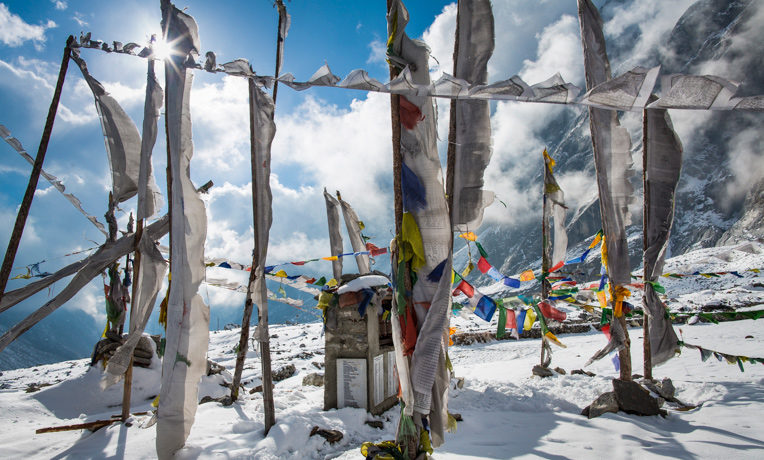
A memorial site for Langtang villagers who were buried underneath the earthquake’s rubble.

